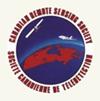Control of vegetation distribution: climate, geological substrate, and geomorphic factors. A case study of grassland in Ordos, Inner Mongolia, China
IF 2.1
4区 地球科学
Q3 REMOTE SENSING
引用次数: 21
Abstract
Many studies have dealt with the relationship between climate factors and vegetation, and some works confirmed the underlying substrate as an important factor in vegetation complexity and diversity in semiarid regions of northern China. However, the leading factor in vegetation distribution may vary with spatial or temporal scales. The objective of this study was to analyze the dominant factors in vegetation distribution and dynamics at large (regional) scales of space or time and at small (local) spatial scales. The results showed that temperature and precipitation were positively correlated with normalized difference vegetation index (NDVI) during a 20 year period (1980–2000) in the Ordos region. Both NDVI and average annual precipitation had the same trends, i.e., decreasing from east and southeast to west and northwest, which indicates the leading role of precipitation in vegetation distribution. At some locations, geologic faults with a well-developed clastic rock pervious layer are important effects on the distribution of vegetation cover in northern Ordos, near the border with the Kubuqi Desert. The lithology of bedrock greatly affects vegetation cover and distribution in the Mu Us Sandy Land area. There, a high percentage farmlands and grasslands with large NDVI values are mainly on low-permeability strata, such as the Quaternary Lake and alluvial deposits.植被分布的控制:气候、地质基质和地貌因素。以内蒙古鄂尔多斯草原为例
气候因子与植被关系的研究较多,一些研究证实下垫层是影响华北半干旱区植被多样性和复杂性的重要因素。然而,植被分布的主导因子可能随时空尺度而变化。本研究的目的是在大(区域)空间或时间尺度和小(局部)空间尺度上分析影响植被分布和动态的主导因素。结果表明:20 a(1980—2000),鄂尔多斯地区气温和降水与植被指数(NDVI)呈正相关。NDVI和年平均降水量均呈现由东、东南向西、西北递减的趋势,表明降水对植被分布的主导作用。鄂尔多斯北部与库布其沙漠交界的部分地区,具有发育的碎屑岩透水层的地质断裂是影响植被覆盖分布的重要因素。毛乌素沙地基岩岩性对植被覆盖和分布有很大影响。高比例的NDVI大农田和草地主要分布在低渗透地层,如第四纪湖泊和冲积层。
本文章由计算机程序翻译,如有差异,请以英文原文为准。
求助全文
约1分钟内获得全文
求助全文
来源期刊

Canadian Journal of Remote Sensing
REMOTE SENSING-
自引率
3.80%
发文量
40
期刊介绍:
Canadian Journal of Remote Sensing / Journal canadien de télédétection is a publication of the Canadian Aeronautics and Space Institute (CASI) and the official journal of the Canadian Remote Sensing Society (CRSS-SCT).
Canadian Journal of Remote Sensing provides a forum for the publication of scientific research and review articles. The journal publishes topics including sensor and algorithm development, image processing techniques and advances focused on a wide range of remote sensing applications including, but not restricted to; forestry and agriculture, ecology, hydrology and water resources, oceans and ice, geology, urban, atmosphere, and environmental science. Articles can cover local to global scales and can be directly relevant to the Canadian, or equally important, the international community. The international editorial board provides expertise in a wide range of remote sensing theory and applications.
 求助内容:
求助内容: 应助结果提醒方式:
应助结果提醒方式:


